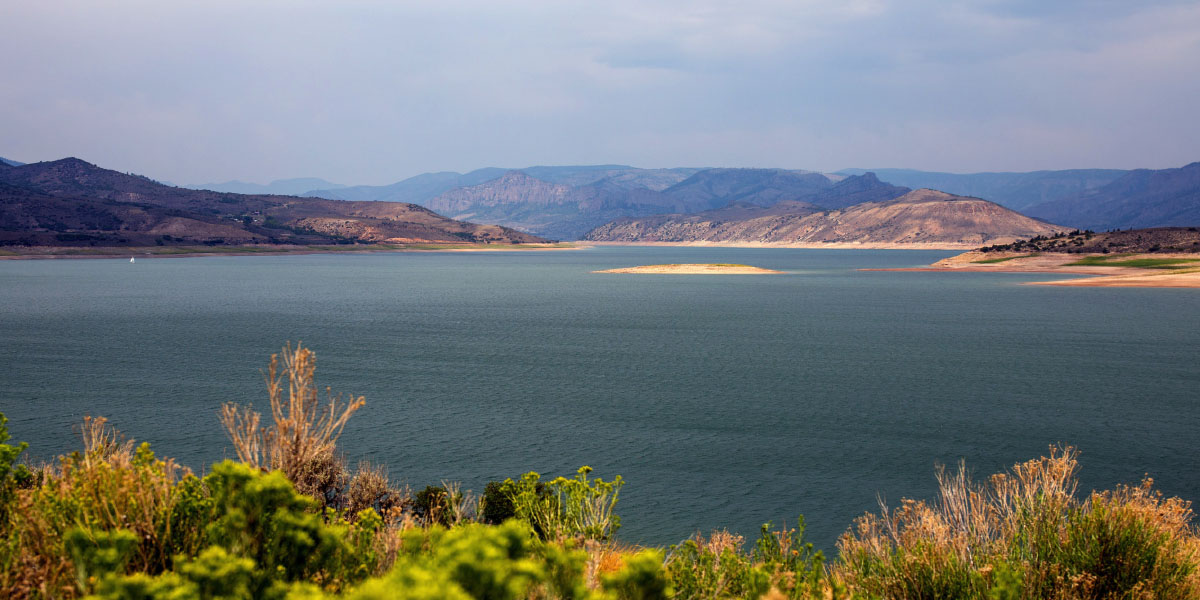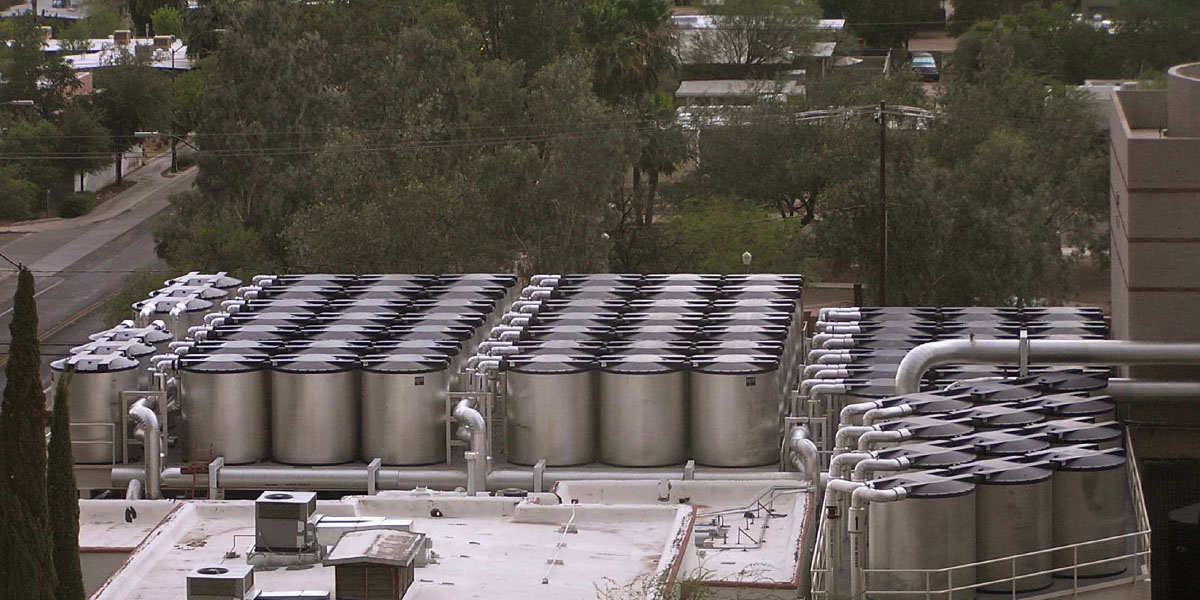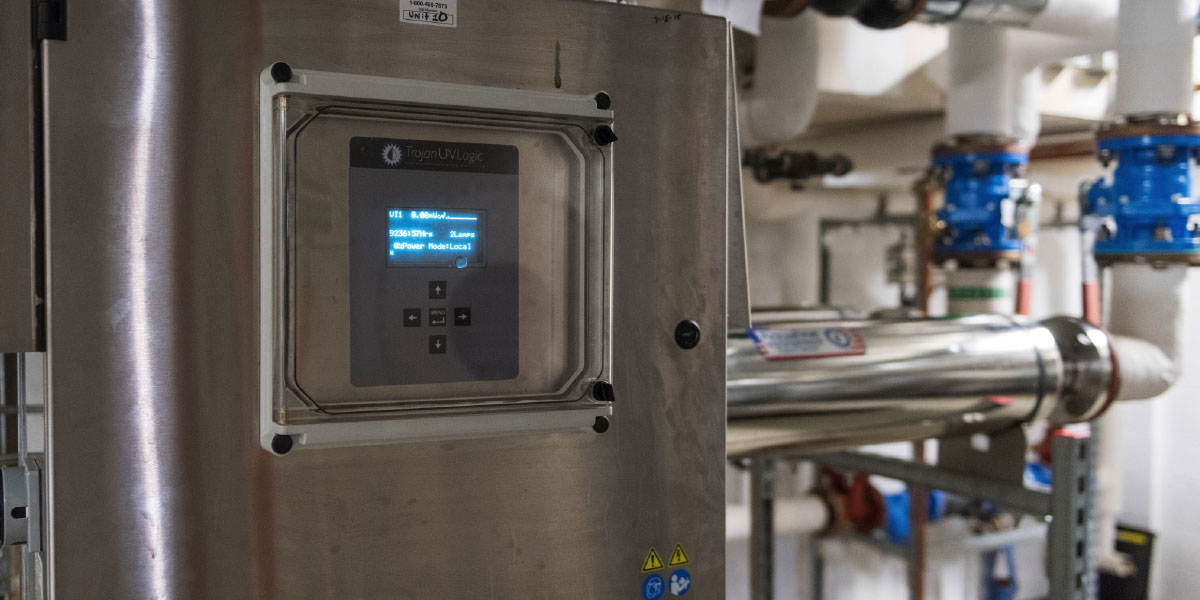Day Zero never arrived for the residents of Cape Town, South Africa. That was the day in 2017 that the city’s government had expected its water taps would be turned off due to severely low dam levels. While controversial, the ultimatum did motivate residents to dramatically alter their daily habits—including showering over buckets to collect and reuse water.
The immediate crisis was delayed but not eliminated, as Cape Town residents are aware that Day Zero could still come. Water use is still restricted for city dwellers, with hefty fines imposed for exceeding limits. And, the new normal now carries implications for necessary shifts in farming practices and new spending on water infrastructure upgrades and innovations in sourcing and delivery.
By comparison, the water situation in the United States may not seem nearly so dire. Yet, the reality is that, in hand with increased land development and population growth, water as a critical resource for daily life—and the rising costs associated with its supply—are gaining attention on the legislative agendas of more and more states and local municipalities. Even in an often deadlocked U.S. Congress, America’s Water Infrastructure Act of 2018 managed to pass both the House and the Senate last October. Among other provisions, the act—triggered in large part by the Flint, Mich., water crisis—authorizes about $200 billion in direct federal funding to expand the nation’s water storage capabilities and upgrade drinking water, wastewater, and irrigation systems.
For campuses, and for the cities and towns in which they reside, multiple factors influence rising water and sewer rates, reaching beyond supply to include the energy and chemicals that may be required for treatment. And, as more aging municipal systems require extensive improvements and expansion, these costs are often passed along to consumers.
Whereas the reuse of water reclaimed from sinks and showers for campus irrigation is becoming commonplace, more institutions are exploring the next-level use of reclaimed water for cooling towers. Few institutions at this point are seriously considering implementing their own systems to capture and treat wastewater from toilets, but those that are may be harbingers of things to come.
Consider the city of El Paso, Texas, which may become the first large city in the U.S. to transform its sewage into tap water. One of the hottest cities in the nation, El Paso is also facing significant shortages of its water supply, as one of the main sources—the Rio Grande river—is under stress from decreasing snowpack, increasing temperatures, and ongoing cycles of drought. El Paso’s plan for an advanced purification system would create a closed loop to treat the wastewater via several phases of membrane filtration and disinfection. Early pilot tests are showing success.
Land and Economic Impacts
Beyond human hydration, water availability is of increasing concern to communities around the country. Two phenomena—subsidence (the gradual sinking of land) and aridification (the gradual transition from a wetter to a drier climate)—are entering the vernacular of more county, city, and campus planners. The small town of Arbuckle, Calif., about 50 miles north of Sacramento, sunk more than two feet from 2008 to 2017, according to a report led by the California Department of Water Resources. Extreme drought from 2012 to 2016 that led to excessive pumping of groundwater—primarily in support of agricultural irrigation—likely fueled the town’s dramatic drop in elevation.
Aridification can contribute to subsidence. As more agricultural communities require increased tapping of groundwater resources to maintain farming yields, these communities may need to grapple with shifts to their traditional economic outputs and come up with new methods of production—or even different crops—that consume far less water. Other industrial and manufacturing enterprises may also soon question how long they can sustain business in the midst of dwindling water supplies without dramatically altering their practices or relocating.
At the very least, cities are coming to terms with new spending requirements to upgrade aging or inadequate infrastructure in order to ensure safe and sufficient water capacity. Perhaps nowhere in the country is there currently a more ambitious proposal on the table than in Texas, where Austin’s Water Forward plan has been approved by city officials. Projected costs of $430 million over two decades would include implementation of smart meters to monitor water use, a greywater system for nonpotable use, and new backup water storage capacity in artificial underground aquifers. Austin is working to ensure that water continues to be available to its residents without draining water resources from another community.
As the profile of water use across the country changes, water quality and capacity concerns will certainly grow in importance for more campuses and municipalities regardless of location. Already, several institutions are responding to this increasing awareness about water resources.
Water Pressure
“Population growth and drought are the worst possible combination for water quality in the West, and Colorado has seen both,” says Julie Baca, vice president of finance and administration and chief financial officer at Western Colorado University, Gunnison. According to the Colorado State Demography Office, Colorado’s population will grow from around 3 million in 1980 to a projected 7.5 million by 2040.
Increases in population and related development are primary factors driving up water consumption, but they aren’t the only impacts on water supply, says Baca. “Already we are experiencing, in the first two decades of the 21st century, a decline in the local water supply of about 10 percent from the 20th-century average.” While that loss has generally been attributed to drought, climate scientists are suggesting this is likely the new normal—a permanent reduction in the water supply, with more to come—perhaps as much as another 10–15 percent loss, she says.
“Even in years with normal snowpack, we have experienced subnormal runoff due to increased evaporation and plant transpiration driven by higher average temperatures. This may not sound significant, because we are a rural, high-mountain community, but we are the largest source of water to the Colorado River,” explains Baca. In fact, the water resources from this pristine mountain region along the western slope of the Continental Divide serves most of the Southwest region of the United States via Lake Powell and Lake Mead, which in turn feed huge demands from California, Nevada, and Arizona.

Plan for Future Shortfalls
Colorado adopted its Water Plan in 2015, which was developed to address a projected statewide shortfall of as much as half a million acre-feet of water. That’s roughly the equivalent amount of water it would take to fill up Blue Mesa Reservoir, the largest body of water in the state, located about 10 miles from Western Colorado University. The state’s water plan has identified water availability gap scenarios, and estimates that $3 billion may be required between now and 2050 to fund water projects that would avoid supply gaps, Baca says.
Locally, the Upper Gunnison River watershed management plan provides various adaptation scenarios based on current conditions and how they may unfold in the coming decades. One of the issues is drought, which is causing the physical reduction of water available for agriculture use for the region as well as for downstream users. There are also water quality issues for agriculture due to salinization, explains Baca. “Drought also creates increased risk for large-scale wildfires, which further put our water resources at risk.”
As a major employer in its community, Western Colorado University is working in partnership with its water district on conservation plans. Across the U.S., various interstate compacts for water use could increasingly end up ensnarled in litigation, warns Baca. This “paper water”—promises for a guarantee of water supply—doesn’t necessarily factor in the reality of changing circumstances over time. Both Colorado and the community of Gunnison are keenly aware of the contested nature of water, with so many downstream communities dependent on inflow from the Colorado River. It’s important for those downstream communities to implement conservation efforts. “Everywhere, population growth and development impacts are all putting pressure on water use and water rights,” says Baca.
Valuing Water
Tucson, Ariz., is one of many communities that gets its water from the Colorado River basin, so Christopher Kopach can truly appreciate the conservation efforts of those upstream. He is also a big canyon hiker and in his free time enjoys trekking where his water comes from. “When considering all the different locations that this water has to feed before it gets to us—Las Vegas, Los Angeles, the farms in California, and Phoenix—I can attest to the value of every drop we get,” says Kopach, assistant vice president, facilities management, at the University of Arizona (UA), Tucson.
Myriad water-related challenges exist for an area with more than 120 days of 100-plus-degree weather in a year, and where the average annual rainfall is less than 12 inches. The state has officially been in a drought since 2000, so it’s no surprise to Kopach that during this time period water and wastewater costs have more than doubled for his institution.
Part of Tucson’s precipitation arrives as torrential rain during monsoon season, notes Kopach. “We might get two inches within half an hour.” Rather than let that resource drain to the streets, UA’s Students for Sustainability, with the support of the facilities management team, has implemented a series of water-harvesting basins across campus that are now capturing 99 percent of the rainfall within those areas, says Kopach.
The university is in phase two of upgrading its irrigation system. It has transitioned to using nearly 85 percent reclaimed water, including for the majority of all turf fields. “We’re also in the process of assessing how best to make use of treated reclaimed water in our cooling towers, which account for about 55 percent of our total water consumption on campus,” says Kopach. The bulk of UA’s reclaimed water supply comes from a reclaimed water station on the edge of campus sourced directly from the city.
Smart-Use Cooling Towers
Many institutions use the greatest amount of water for cooling towers. This process includes water loss through evaporation and blowdown—essentially the flushing of high-mineral-concentration water resulting from chemical treatment. “One problem with blowdown from cooling towers is that the high mineral content is not good to reuse for irrigation without first being treated,” says Kopach. On the upside, much is happening in research and development related to figuring out how to reuse this spent water, and in water conservation and reuse in general. Kopach is hopeful that significant water conservation can ultimately be achieved through engineering and technology innovations yet to come.
During the past six years, UA has brought in better measurement equipment and systems throughout its campus, including computerized meter controls that allow staff to monitor real-time water use for 22 chillers across campus. The university has also transitioned from including water as a component within a larger master plan to developing a specific water master plan. “You really need to start with metering, and measuring and assessing at a granular level your water flows—who or which building or system is consuming how much of what type of water resource and when,” says Kopach.
Likewise, reviewing more global information, such as overall steam load, allows institution leaders to understand where primary costs are coming from and where opportunities exist for savings. “All this helps in developing a ranked list of priorities based on conservation targets and ROI,” says Kopach. Collecting and monitoring data over time can also help pinpoint abnormalities that might indicate a major leakage that would otherwise be undetectable, since so much of the water infrastructure of a campus is underground, says Kopach. “A previous water use study we conducted led to investigating a large level of water loss in our research facilities, and we were able to identify a leak behind a piece of equipment to which we didn’t normally have access.”

The Water-Energy Nexus
While the correlation between water and energy consumption and costs has been present all along, as water rates increase, the connection is becoming more evident to more people and should motivate consumers to conserve and innovate, says Kopach. For example, UA produces 36,000 tons of chilled water per day during the hottest time of the year to keep its buildings cool in a desert environment. By making ice in the evening, when electricity is less expensive, the university can then melt that ice during peak demand from 2 p.m. to 8 p.m., instead of using electricity to push chilled water out to campus buildings.
In another example, a 6.5-mile network of tunnels on campus that dates back to the 1930s allows facilities staff to routinely check steam lines. By adding insulation around 5,000 linear feet of steam lines to avoid loss of steam into the tunnels, thereby making them as efficient as possible, UA saved on water and energy costs, says Kopach, and yielded $1 million in savings.
In an even more straightforward solution, less water used in showers has had a direct impact on the amount of energy required to heat that water. In addition to low-flow showerheads and water-conserving fixtures for hand sinks, UA has been steadily transitioning to low-flow toilets and waterless urinals throughout campus. The university is near completion of a major study of campus water use from 2015 to 2018 that will further inform how and where UA can continue to conserve water resources and drive down costs.
Key to any water conservation effort—as is true for energy—is behavioral change through education, stresses Kopach. In particular, dual-flush controls for liquid versus solid waste in toilets may require an adjustment for some. The good news is that there is a lot that an institution can do based on ROI alone. And, as municipal utilities understand the need for widescale conservation, rebates are on the rise for high-efficiency fixtures that can reduce consumption by up to 50 percent, notes Kopach.
UA has recently joined the 2030 Districts Network within the city of Tucson, which has an overall goal to reduce water use by 50 percent by 2030. Among other goals, the network supports cities and communities with transforming their built environments in ways that mitigate and adapt to climate change through high-performance buildings that reduce resource use.
Infrastructure Fixes
At the Georgia Institute of Technology, Atlanta, the proactive pursuit of water conservation is twofold, according to Mark Demyanek, interim senior vice president for administration. First, the institute must mitigate costs associated with what are among the highest water utility rates in the country: approximately $30 per thousand gallons—$21 of which is for sewer costs. And second, the institute must increase its resilience and self-sufficiency by taking steps to ensure water quality for drinking supplies and physical plant infrastructure needs.
As with many cities across the U.S., Atlanta’s water infrastructure is in need of significant repair. In fact, one reason sewer rates in particular are so high is because Atlanta has a combined storm and sanitary sewer system and has endured steep fines for pollution when there is overflow—more common due to more frequent extreme weather events that can leave streets and sewers flooded. “Those fines, in combination with a massive infrastructure improvement to separate the two systems to better handle discharge, have translated into higher water bills passed along to consumers,” says Scott Jones, the university’s associate vice president of design and construction.
For a metro area faced with significant water infrastructure needs, the timeline for implementing those improvements has been challenging, and that has kept other pressing priorities, such as building up crucial water reserves, off the front burner, notes Demyanek. Jones also cites projections made by the Army Corps of Engineers decades ago that identified the need for at least 50 reservoirs throughout Georgia. The state is currently in the process of building its third reservoir. “In fairness, most states are not as focused as they should be on water quality and resilience at a time when new pressures are mounting on water supply,” notes Jones. His concern about the potential for water scarcity issues going forward is underscored by the state’s decades-long litigation with Florida and Alabama over how much water each state can take from the Chattahoochee River.
Enhancing Reserves
High water rates and concerns about water availability have prompted Georgia Tech to take on a variety of water management projects to ensure that the campus can sustain disruptions to its water supply, notes JulieAnne Williamson, assistant vice president, administration and finance. “The Clough Undergraduate Learning Commons [at Georgia Tech] has one of the country’s largest higher education cisterns, capable of storing 1.4 million gallons of water.” That translates into about a month of greywater for toilet flushing for the building. The reclaimed water from the 28 networked and stand-alone cisterns across campus, which hold a combined 2.3 million gallons, is also used to irrigate about one-third of the institute, with the ultimate goal of increasing to 50 percent, notes Williamson.
One challenge is that the cisterns can be costly to maintain, says Chuck Rhode, vice president for facilities management. The largest cistern in particular drains from about 16 acres and carries a lot of sediment that requires filtration prior to use. The standing water underground must also be tested and treated for E. coli and other contaminants. That said, what the cisterns do provide is a level of water security related to daily operations.
Another way Georgia Tech is exploring resilience is through its Kendeda Building for Innovative Sustainable Design. When it opens later this year, it will be the first facility of its size and function in the Southeast to pursue Living Building Challenge certification, says Williamson. The “regenerative” design certification framework requires that the building create 10 percent more energy than it uses and use only water that has been captured on site. Educational outreach for the $25 million structure, philanthropically funded by The Kendeda Fund, will include opportunities to work with state and local water authorities on smart-water-use practices, notes Williamson.

Next-Level Solutions
A significant portion of Georgia Tech’s water consumption is dedicated to keeping buildings and systems cool. With more than $800 million in research activities to protect, continuity of cooling tower functions is crucial, says Rhode. In addition to intermittent disruptions to the municipal water supply stemming from storm damage, extended droughts in the past have caused uncertainty about maintaining sufficient supply. “As a matter of resilience, we have drilled wells and have plans in place, not yet funded, for a backup blackwater reclamation system that would potentially allow us to take sewer water and treat it so that we could use this in our cooling towers,” explains Rhode. “The only problem keeping us back is the level of investment required to make that happen.”
If money were no object, Georgia Tech could entertain going off the water grid, but that would require significant spending on additional cisterns and a fully functional water treatment operation, adds Williamson. “You have to balance the right level of self-sufficiency so that you can continue critical operations cost effectively.” In the meantime, Georgia Tech is studying all options. Currently, its existing cistern infrastructure affords the university the ability to perform triage in the event of a major disruption to supply, says Rhode. “We can prioritize impacts to research and to the nearly 8,700 students who live on campus.”
Do Your Part
Western Colorado University is mindful of doing its part to reduce overall water consumption. It has purchased its own rights for using raw river water for campus irrigation rather than tapping into the municipal water supply. This not only requires less energy but also reduces the university’s water bill, says Baca. “We use a 10,000-gallon tank set on a timer system so that we can use the water as efficiently as possible by tracking precipitation through a weather station.” Even with that existing water right, the university has steadily been switching to native landscapes and is converting its largest NCAA soccer field from natural to artificial turf to decrease irrigation needs, so that it might eventually cease irrigating altogether.
Most significantly, when Western Colorado University replaced five older apartment buildings with one new LEED apartment complex in 2012—capable of accommodating the same number of students—the university realized an 82 percent savings in total gallons of water used related to residential life. The combined water-conservation measures implemented across campus have yielded about $200,000 in annual water-related savings since 2008, says Baca.
“The reality is that the majority of our conservation efforts to date have been passive efforts with the aim of saving money,” Baca says. In the future, the university will need to employ more active conservation projects such as installing greywater reuse infrastructure in dormitories or academic buildings. “Such efforts will have a large impact on conserving resources and reducing ROI. Given our limited financial resources, such projects are certain to generate greater campuswide discussion.”
Beyond Campus Borders
While the particular water issues and related policy implications may vary by region and community, Baca believes tough conversations are going to be happening for more municipalities across the nation. The discussions will not only be about water conservation, but also focus on the benefits of a continued growth mentality and perceived rights to development. “We need to elevate these conversations, because stricter water conservation laws are coming.”
Baca believes that, for their part, college and university leaders have a responsibility to pay greater attention to the larger water landscape—to think beyond campus boundaries and consider partnering with local governmental agencies and water conservation districts to develop collaborative solutions for both water availability and its quality. For instance, already some locations are showing high levels of prescription and over-the-counter drugs in recycled municipal water. Industrial chemicals, pollution to watersheds from fertilizer runoff, and increased salinization are also impacting many more communities than in the past, notes Baca.
Because of the sheer complexity and interconnected nature of water as a critical resource, Western Colorado University has hosted its Colorado Water Workshop since 1976 with the aim of increasing understanding of the regional and global impacts of water consumption. The workshop was launched as a joint effort between a history professor and an alumnus water attorney to bring together in civil conversation the various factions involved in water issues.
Wanted: The Best Ideas
As part of his pursuit of improvements for his campus, Kopach joins a monthly conference call and meets in person quarterly with his counterparts from Arizona State University and Northern Arizona University to share best practices for utilities efficiencies. Kopach is also active in information-sharing with Pac-12 institutions and has traveled to universities throughout the world to exchange ideas—including Australia, New Zealand, and most recently South Africa, where he represented APPA in his role as immediate past president. “Water conservation is a necessity for us here in Arizona. Anything we can learn to bring back to our campus provides a good return, because we never want to get to the point of crisis management.
“Most of us don’t fully appreciate the value of water until it is taken away or restricted,” says Kopach. “We all need a better understanding of the challenges taking place within our oceans, rivers, and lakes.” One bright spot he sees: “The current generation of students gets it.” Kopach suggests routinely taking institution leaders on a tour of campus facilities and the physical plant to point out the efficiencies in place, the challenges ahead, and the opportunities available. “If everyone understands the campus infrastructure as a whole, they will better understand the need for project improvements that go beyond a deferred maintenance Band-Aid.”
KARLA HIGNITE, Fort Walton Beach, Fla., is a contributing editor for Business Officer.



